
These amazing animals come in so many shapes, sizes, and personalities, it’s almost overwhelming.
Thinking about getting a snake?
The most popular pet snakes come from three main families: Pythonidae, Colubridae, and Boidae.
For good reason. These groups packed with species famous for being easy to care for and handle.
But they all have different qualities.
It’s smart to know which breeds are best for beginners and which might suit more experienced keepers.
Some snakes take a bit more work, and each breed has its own quirks, needs, and personality that can make them stand out as companions. We’ll help you figure out which one is best for you.
Most Popular Snake Breeds
The following snakes are all hugely popular as pets. They all have qualities that make them good pets, but which qualities they have differs. That ios why some might make a good et for you, while others would not. This article will help you figure out which species is ideal for you.
1. Corn Snake

The corn snake gets called the perfect beginner snake for a reason. Most people find them easy to care for and handle, and they’re usually calm and gentle.
Native to the southeastern United States, corn snakes come in a wild array of colors and patterns. Some rare morphs can fetch up to $1,500, which is kind of wild for a snake, honestly.
They stay a manageable size—no wrestling giant pythons here. Feeding is a breeze, since they take frozen-thawed rodents. They do great in captivity, which is a relief if you’re new to this.
With good care, corn snakes live up to 20 years, so you’re signing up for a long-term buddy. You can find them everywhere—reptile stores, shows, even online.
Their docile nature and those beautiful markings win people over fast. They rarely bite and are easy to handle, which is perfect for anyone just getting into reptiles.
Plenty of keepers get into breeding corn snakes. Males are ready to breed at around two years, females at three. It’s a whole hobby in itself. Honestly, if you walk into any reptile specialty shop or show, you’ll probably see corn snakes for sale. They’re just that accessible.
2. Ball Python
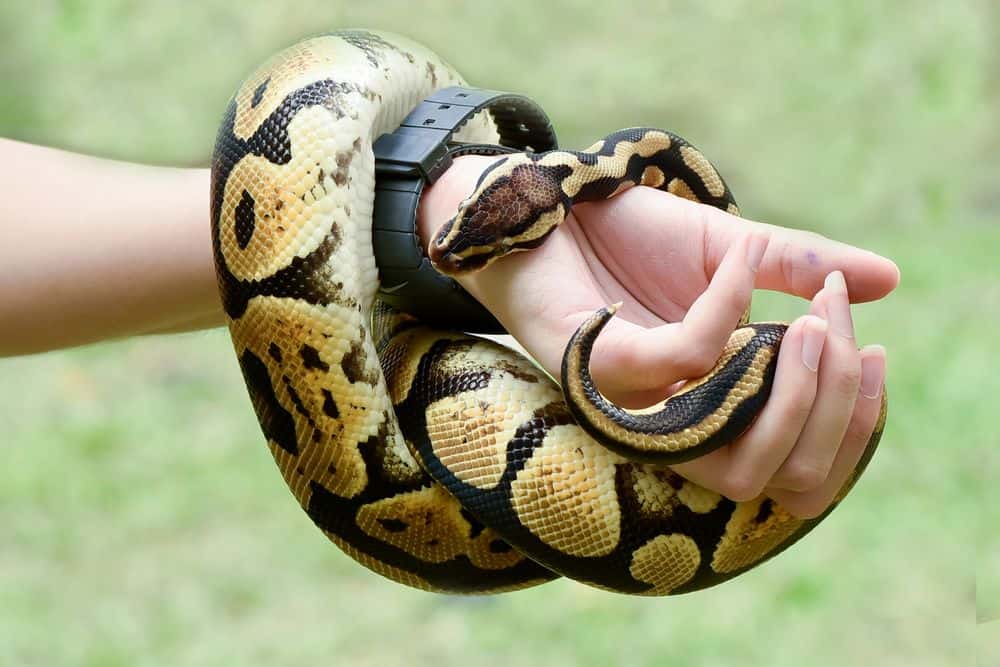
Ball pythons are the world’s favorite pet snake. Their calm nature makes them a hit with both beginners and folks who’ve kept snakes for years.
They grow to a manageable 3 to 5 feet, so you don’t need a massive enclosure. That’s a plus if you’re short on space.
People love how docile ball pythons are. They almost never bite and usually handle well, even around older kids.
There are thousands of morphs—so many color and pattern combos it’s hard to pick just one. If you like variety, this is your snake.
They mostly eat rodents, and their care isn’t complicated. You won’t need any fancy equipment or setups.
With good care, ball pythons can stick around for years. They really do become part of the family.
When scared, ball pythons curl up into a tight ball—hence the name. It’s oddly cute.
If you’re new to snakes, ball pythons are a solid choice. Their chill temperament and simple care make them ideal for starting out.
3. King Snake
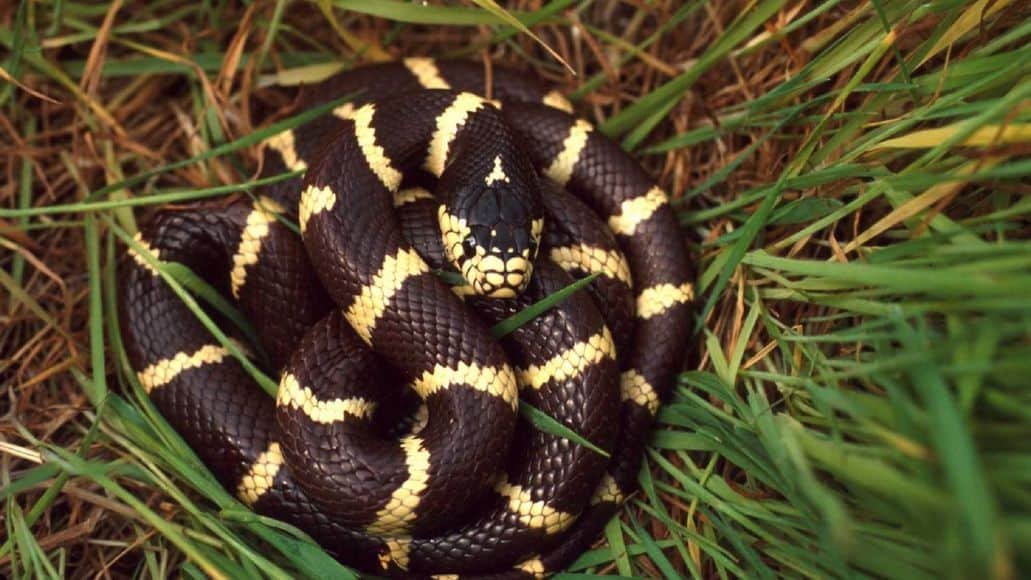
King snakes are some of the most active hunters you’ll ever see. They’ve got a high food drive and love to explore their enclosures.
They’re famous for their bold colors and patterns, which really pop in any collection. King snakes don’t ask for much in terms of care, so they’re great for beginners.
Fun fact: king snakes eat other snakes! That’s called being ophiophagous. Their curiosity and hunting instincts make them fascinating to watch.
They’ve got thick bodies and can adapt to a range of environments. Give them the right setup, and they’ll thrive. Captive breeding is common, so you’ll find king snakes at reptile stores, online, or shows without much trouble.
If you want a snake that’s always on the move and shows off natural hunting behaviors, king snakes are hard to beat.
4. Western Hognose Snake
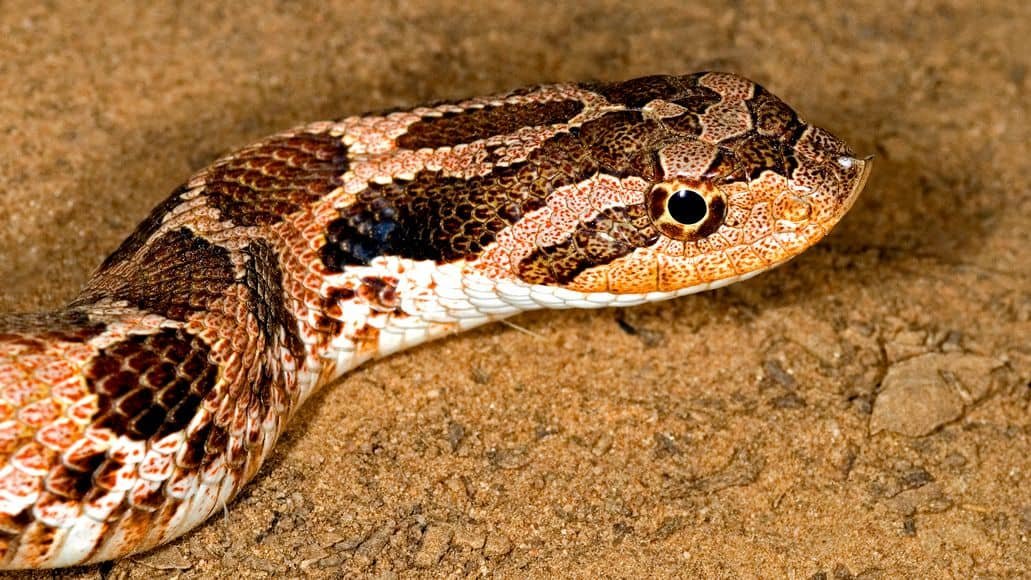
The Western Hognose is a fantastic pick for both new and experienced snake owners. They’re small—usually maxing out around 14 to 24 inches.
They’ve got this adorable upturned nose, almost pig-like, which helps them dig in sandy soil. It’s a fun look. There’s a whole range of colors and patterns, including morphs like albino and anaconda. Collectors go wild for these.
Western Hognose snakes are gentle and easy to handle. Instead of biting, they’ll sometimes play dead if frightened—it’s actually pretty entertaining.
With proper care, they can live up to 20 years. No complicated setups needed, so beginners can relax. Feeding’s easy: small rodents. Thanks to their size, you don’t need a huge enclosure.
When threatened, they might hiss, flatten out, or even flip over and play dead. It’s more drama than danger, really. They’re native to North America’s sandy regions and love to burrow. You’ll probably catch them hiding out a lot.
5. Milk Snake
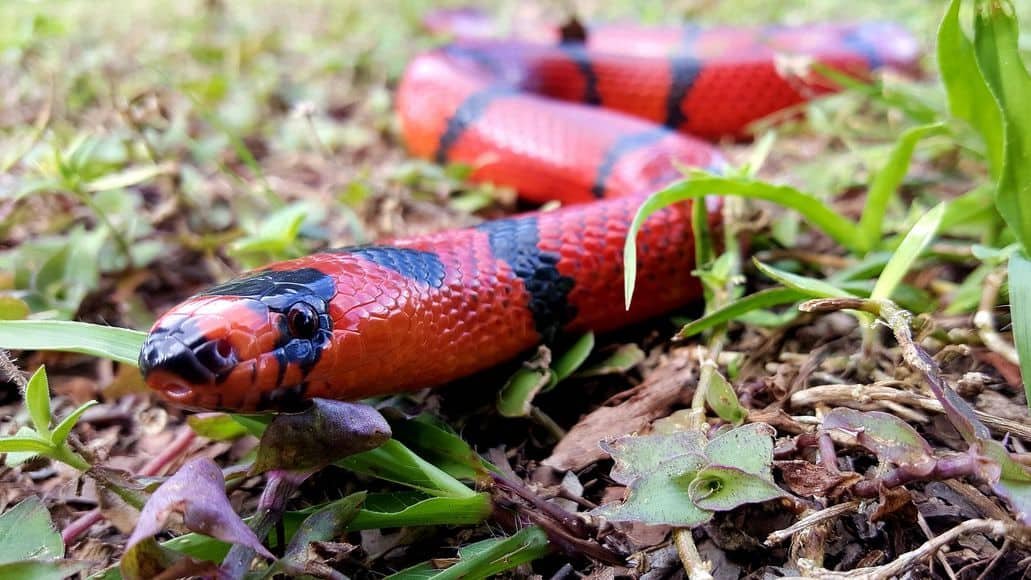
Milk snakes are real showstoppers with their bold colors—red, black, and yellow bands that really stand out. You’ll find 24 different types of milk snakes, each with its own twist on patterns and colors.
Eastern milk snakes are especially popular as pets. They’re calm and rarely bite, and their shiny scales and checkered bellies are pretty striking. Pueblan milk snakes have thick black bands with red and yellow, or sometimes white, for even more options.
Milk snakes are easy to care for. Just feed them rodents and keep the setup simple. Most stay calm when handled. Captive breeding is common, so you’ll get healthy snakes that adapt well to home life.
If you want something colorful but manageable, milk snakes are a top pick. Lots of keepers start with them. And many stick with them as a favorite.
6. Blood Python
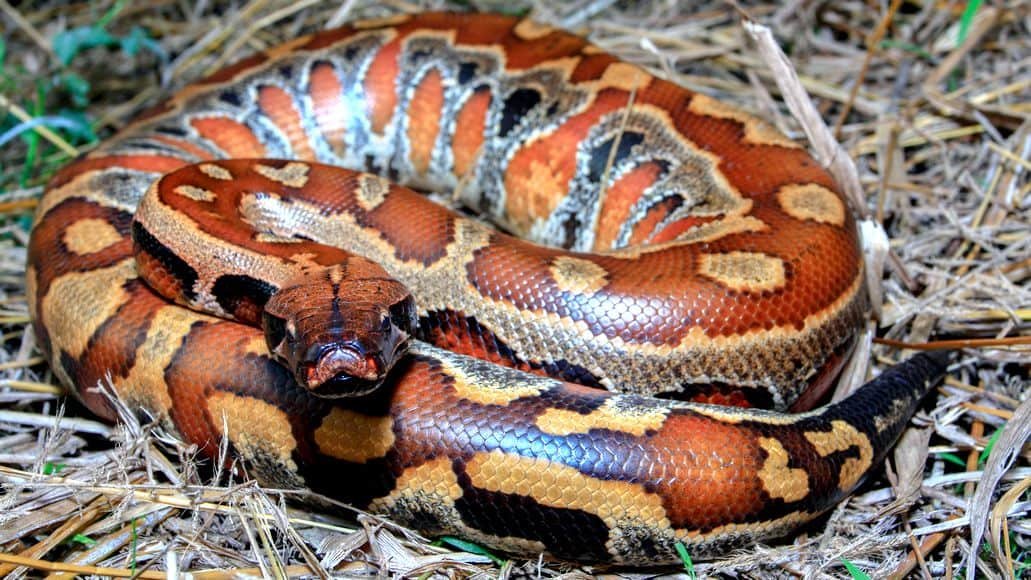
Blood pythons are thick, stocky snakes—definitely for keepers who want something a bit different. Their red color patterns are gorgeous, which is probably how they got their name.
They come from Malaysia, Thailand, and Sumatra, and can range from dark brown to bright yellow, but the red ones get all the attention. Blood pythons reach 6 to 8 feet, with short tails and hefty bodies. They don’t look like your average python.
They can be shy or defensive at first, but with gentle handling, most calm down nicely. They need a warm, humid setup to mimic their natural jungle homes. You’ll need to pay attention to temperature and humidity here.
Blood pythons have been kept as pets since the early 1900s, and zoos love them for their looks. If you’re just starting out, maybe go with an easier species. Blood pythons are better suited for those who already know their way around snake care.
7. Boa Constrictor
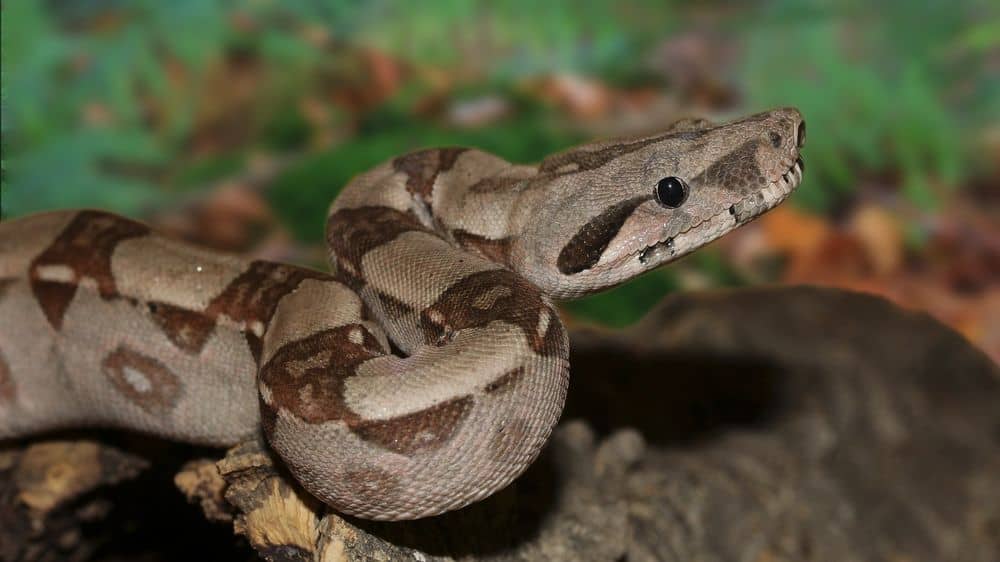
Boa constrictors are great if you want a bigger snake than a ball python. Once they get used to you, they’re calm and easy to handle.
The common boa constrictor is the go-to for most pet owners. They’re from Central and South America and can live up to 30 years if you take care of them.
Boas are non-venomous and pretty friendly. They squeeze their prey instead of using venom, which is a relief to most people.
They reach 6 to 10 feet, so you’ll need a big tank—at least 40 gallons for adults, though bigger is always better.
Feed them rodents every week or two. Not much fuss, really. Red-tailed boas and boa imperators are both popular and suitable for beginners who want to try keeping a larger snake.
They need a warm basking spot (88-92° F), a cooler area (78-80° F), hiding places, and fresh water. Not rocket science, but you have to stay on top of it.
8. Rosy Boa
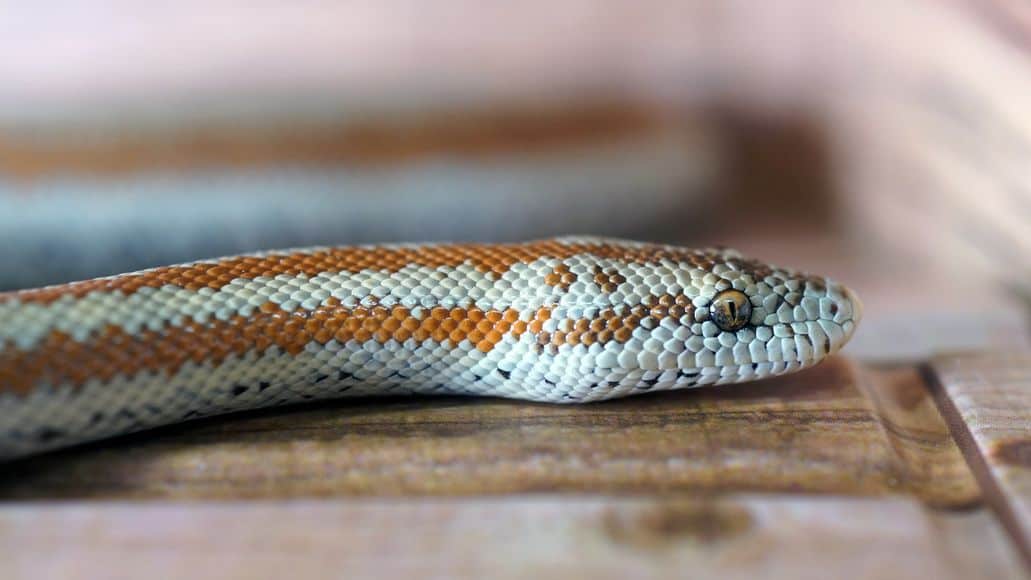
Rosy boas are perfect if you want a small, gentle snake. They only grow 17 to 44 inches, making them one of the smallest boas you’ll find as pets. They’re calm, friendly, and almost never bite. The rosy or pinkish colors with brown stripes are really pretty.
Rosy boas are native to the southwestern US and northern Mexico. They like desert areas and burrowing among rocks, which translates well to life in a tank. With good care, they can live 20 to 30 years, sometimes more. That’s a lot of years for such a little snake.
Because they’re small, you don’t need a huge enclosure. They’re easy to feed and generally low-maintenance.
For beginners, rosy boas are a fantastic option. They adapt to different environments and handle stress better than a lot of other species. You’ll probably find them docile their whole lives.
9. Gopher Snake
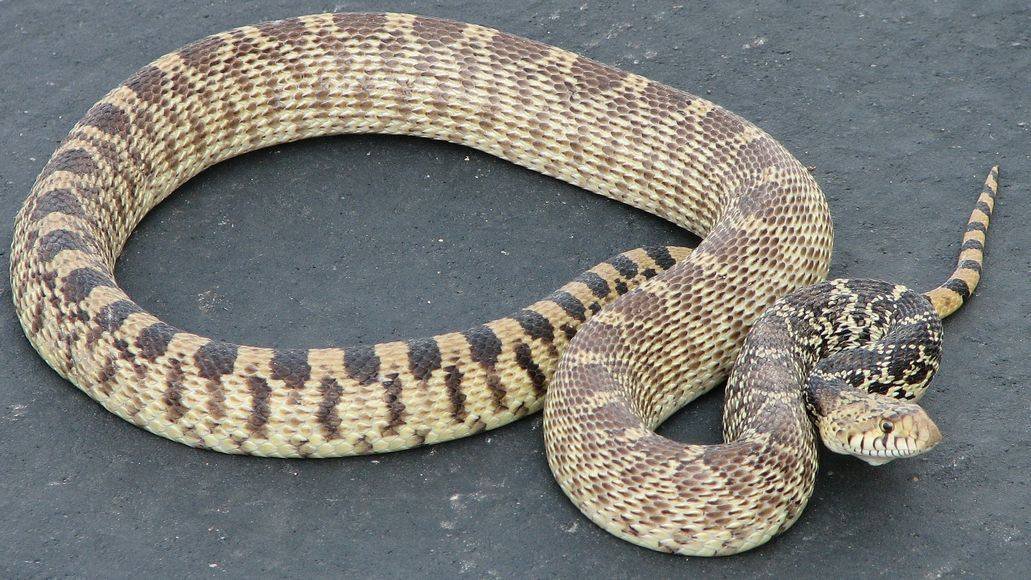
Gopher snakes are a solid choice for reptile lovers. They’re calm, easy to handle, and a good option for beginners. They grow between three and seven feet. There are nine types, including the bullsnake and Sonoran gopher snake.
Their patterns and colors are beautiful, and they often get mistaken for rattlesnakes—even though they’re totally harmless.
Gopher snakes are smart—some even seem to recognize their owners or respond to their names. That’s not something you get with every snake.
Care is straightforward. No complicated routines, so they’re perfect if you’re just getting started. They adapt well to captivity and don’t get stressed out easily. Gopher snakes have a gentle temperament and rarely get aggressive, which is why so many people choose them as pets.
10. Black Rat Snake
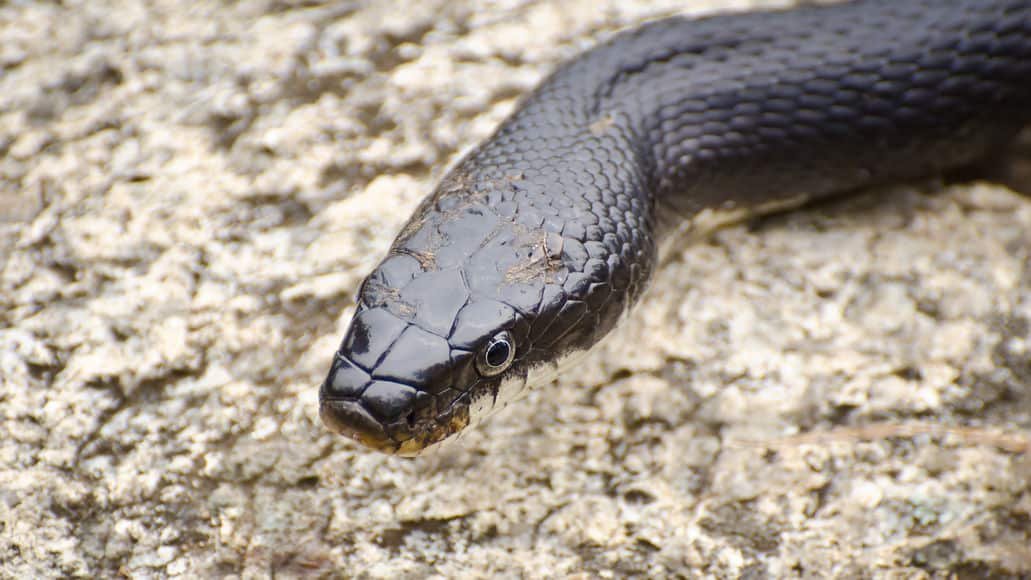
The black rat snake is a great pick for a first pet snake. They’re calm and gentle—really easygoing. Biting or aggression is rare. If scared, they’d rather make a run for it than fight.
They’re native to North America and have shiny black scales that look amazing under the light. These snakes can get pretty big, making them one of the larger non-venomous pet snakes you can own.
Care is simple. No fancy setups or special equipment needed. They eat rodents like mice and rats, and you can grab frozen prey at almost any pet store.
Also called eastern rat snakes or pilot black snakes, they sometimes get mistaken for rattlesnakes in the wild. Black rat snakes are hardy and adapt well to captivity. They rarely get sick, which is always a plus. Because they’re so docile, even beginners can learn to handle them safely with a bit of practice.
Choosing The Right Snake Breed
Picking the perfect snake really comes down to three things: how the snake acts, how long it’ll live and grow, and what kind of home you can provide. It’s not always an easy decision, but that’s part of the fun.
Snake Temperament And Behavior
Some snakes are pretty chill and let you handle them without fuss. Others? Not so much. They might get defensive or even bite if they’re startled.
Calm Snake Options:
- Ball pythons usually stay relaxed when you pick them up
- Corn snakes don’t get riled up or bite very often
- Kenyan sand boas tend to be gentle around people
More Active Snakes:
- King snakes can be a bit nippy when they’re young
- Rainbow boas like to move around more
- Green tree pythons usually prefer to be left alone
If you’re new to snakes, it’s better to start with a docile species that doesn’t mind some handling. Makes life easier, honestly.
Some snakes hide most of the day, while others come out and explore their tanks. Do you want a snake you can actually watch, or are you fine with one that just hangs out under a log all day?
Feeding behavior matters too. Most pet snakes eat frozen mice or rats, but a few need more specific diets or even live prey.
Lifespan And Growth Considerations
Snakes stick around a lot longer than most pets. With decent care, many live 15 to 30 years.
Size Planning:
- Ball pythons get to about 3 to 5 feet long
- Burmese pythons can top 15 feet (not exactly apartment-friendly)
- Sand boas usually stay under 2 feet
Think about how big your snake will get. That tiny 12-inch baby might turn into a 6-footer before you know it.
Growth rates really depend on the species. Some reach adult size in 2-3 years, while others just keep slowly growing for five years or more.
Age considerations are a big deal, especially for families. If your kid gets a snake at 10, they might still have it when they’re in college. Are you ready for that kind of long-term commitment?
Female snakes often get bigger than males. It’s worth checking the size difference before picking one out.
Husbandry And Habitat Requirements
Snakes need different setups depending on the species. Some are low-maintenance, while others are a bit picky about their environment.
Temperature needs change based on where the snake comes from:
- Desert snakes like it hot and dry
- Tropical species want warmth and plenty of humidity
- Temperate snakes do better with some seasonal variation
Space requirements go up as your snake grows:
- 40-gallon tanks work well for smaller snakes
- Big pythons need custom-built enclosures
- Active snakes appreciate longer tanks to roam
Humidity levels really matter for their health. Ball pythons do best at 50 to 60% humidity. Corn snakes are fine with 40 to 50%.
Some species need special lights, but a lot of snakes just need a regular day-night cycle.
Substrate choice makes a difference for cleaning and your snake’s health. Skip cedar or pine shavings—they’re not safe. Honestly, paper towels work great if you’re just starting out.
Hiding spots are a must. Give each snake at least two places to hide. And make sure water bowls are heavy enough so your snake can’t flip them over. You’d be surprised how often that happens.
Health And Care Tips For Pet Snakes
Good snake care comes down to gentle handling, preventing common health problems, and keeping things clean. Get these basics right, and you’ll probably avoid most headaches.
Handling And Socialization
Start slow when handling your snake. Wait at least 48 hours after feeding before picking it up—otherwise, you risk stressing it out or causing regurgitation (not fun for anyone).
Always support your snake’s body with both hands. Don’t grab just the head or tail. Let your snake move between your hands and explore a bit. At first, keep handling sessions short, maybe 5 to 10 minutes. As your snake gets used to you, you can stretch it to 15 to 20 minutes. Just pay attention to how it’s acting.
If your snake starts hissing, striking, or frantically trying to hide, that’s its way of saying it’s had enough. Put it back in its enclosure right away. Once your snake settles in, handle it a couple of times a week. This helps build trust, but honestly, some snakes never love being handled—and that’s okay too.
Common Health Issues
- Respiratory infections pop up if snakes get too cold or the enclosure’s too damp. Look for mouth breathing, wheezing, or mucus around the mouth or nose.
- Scale rot happens in dirty or overly wet conditions. Watch for dark spots or mushy areas on the belly. Clean substrate and proper humidity help prevent it.
- Parasites can be an issue, especially in wild-caught snakes or those exposed to contaminated food. Signs include weight loss, not eating, or just acting off.
- Stuck shed is usually from low humidity. The old skin doesn’t come off, especially around the eyes or tail tip.
If you spot any of these problems, take your snake to a reptile vet. Don’t try to handle serious health stuff on your own.
Enclosure Hygiene Best Practices
Wash water bowls every week using hot water and a reptile-safe cleaner. Rinse well before refilling. If your snake makes a mess in the bowl, clean it right away. Remove uneaten food within 24 hours—old food attracts pests and grows bacteria fast.
Spot-clean dirty substrate as soon as you see it. Swap out all the substrate every 4-6 weeks or sooner if things get gross.
Wipe down tank walls and decorations each month. Stick with reptile-safe cleaners or a diluted vinegar solution. Let everything dry before your snake goes back in.
Check hides and decorations for mold or funk. Clean or toss anything you can’t get completely sanitized. Give the whole enclosure a deep clean every couple of months. Move your snake to a safe temporary bin while you work.
Popular Snake Breeds Among Enthusiasts: Conclusion
Picking out the right snake really depends on your experience and what you want in a pet. If you’re new to all this, ball pythons and corn snakes are a solid place to start.
Some breeds are super chill and easy to handle, while others show off wild colors and patterns that’ll definitely grab your attention.
Keep these in mind:
- Beginner snakes usually don’t need complicated care
- Calmer breeds are better if you’ve got kids around
- Snakes with rare colors or patterns usually cost more
- No matter the breed, a proper setup matters
With decent care, most of these snakes can stick around for 15, maybe even 20 years. That’s a big chunk of time, so think about what really fits your life.
The snake community is super welcoming overall. You’ll find plenty of people ready to share tips or answer your weird questions, so don’t be afraid to ask in forums, etc.
What to do next:
- Dig into the care needs for your favorite breed
- Get the habitat ready before you bring one home
- Scope out a reptile vet nearby, just in case
- Maybe join a local snake group—it helps
Each breed brings something special. Corn snakes? Bright and lively. Ball pythons? Gentle and kind of endearing. Milk snakes? Their patterns are just wild.
Honestly, the best snake is the one that gets you excited about keeping reptiles. Don’t rush it. Take your time, and you’ll end up with a companion you’ll really enjoy.
Leave a Reply